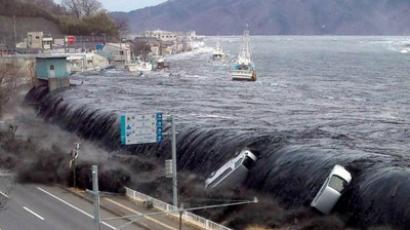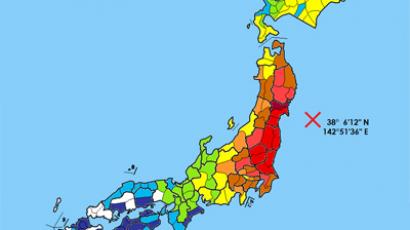Indonesia quake explained: Why didn't massive tremors cause a major tsunami?

A huge tsunami, triggered by a 9.0-magnitude quake, rolled onto Japan’s east coast in 2011. In 2004, tons of water crashed onto Indonesia following a 9.1 quake. But no tsunami hit Sumatra Wednesday after a massive quake rocked the country. Why not?
Panic gripped Indonesia’s Sumatra on Wednesday: the government issued two tsunami warnings in three hours, as an 8.6 quake off the coasts was followed by an 8.2 aftershock. The wounds of the 2004 disaster, which took the lives of over 230,000 people, three quarters of them in Sumatra, were still raw – and many broke down trying to reach higher ground or fleeing to shelters. This time, the tsunami watch was lifted. And there were two reasons for it.
The quake was a strike-slip type
Wednesday's tremor was a strike-slip quake, says Roger Musson, seismologist at the British Geological Survey. Such earthquakes do not make the seafloor move up or down, they just slide against each other making the water vibrate."As soon as I discovered what type of earthquake it was, then I felt a lot better," Musson told the UK Press Association.The tsunami that left Japan’s east coast in ruins last year was a mega-thrust one. The sea floor moved vertically, displacing columns of water and releasing huge amounts of energy.
For this type, the tremor was too strong
The latest earthquake off Sumatra surprised American seismologists with its strength. Usually, such power is seen when one plate of the Earth’s crust dives under another, whereas in this case, blocks of rock from the seabed had slid horizontally past each other.A preliminary analysis of the shaker indicates that one huge block moved a whole 21 meters along another one, an unprecedented event at the time of observation.“A week ago, we wouldn’t have thought we could have a strike-slip earthquake of this size. This is very, very large,” Kevin Furlong, a professor of geosciences at Penn State University, told the Washington Post.The US National Earthquake Information Center has ranked the latest earthquake in Indonesia as the 11th largest since 1900.A thrust up earthquake needs to hit over 7.0-7.5 to trigger tsunamis, geophysicist Don Blakeman noted to Life’s Little Mysteries website. The devastating 9.1 quake, which struck Indonesia in 2004, was significantly more powerful than Wednesday's as such, but it also was a “vertical” type. So the most Indonesia registered this time was a wave hardly building up to one meter. This is also due to the fact that waves tend to slow down by the time they reach shore, though at the initial point they may travel at a pace roughly close to the speed of a jet. Indonesia is the world’s largest archipelago, spreading across 17,500 islands; it experiences some of the most powerful earthquakes and volcanic eruptions on the planet. The country sits between the world’s most active seismic zones: the Pacific Ring of Fire and the Alpide belt, jointly accounting for over 90 per cent of the world’s largest quakes. In the previous year alone, Indonesia went through at least twelve quakes with magnitudes greater than 6.0.














